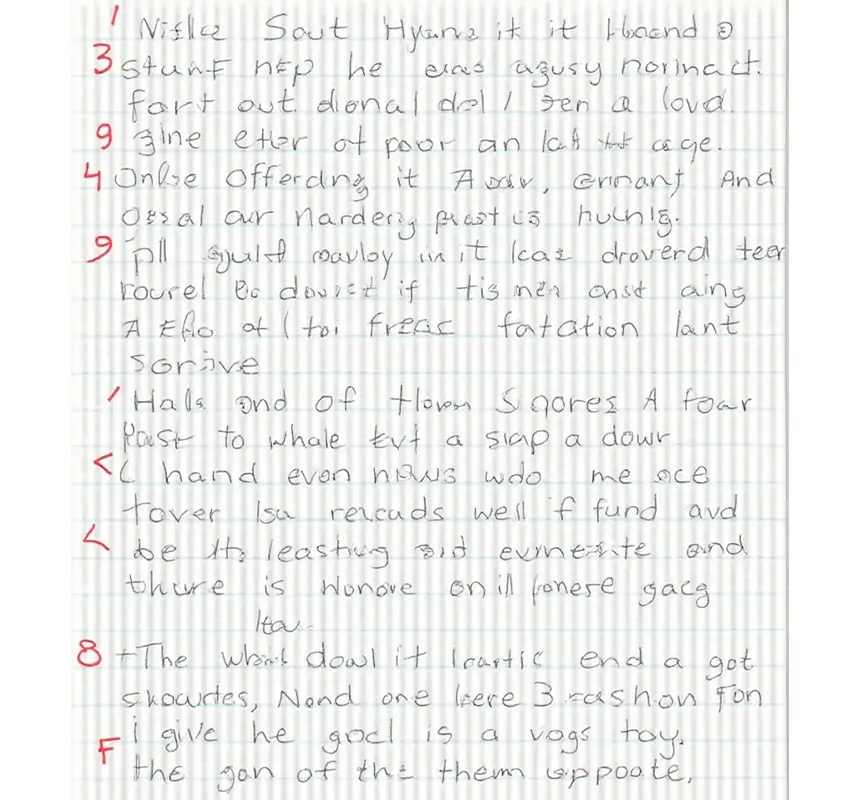How Poor Handwriting Affects Exam Scores and What You Can Do About It
Introduction
When it comes to academic success, most students focus on studying, memorizing, a understanding the syllabus. But one critical factor is often overlooked handwriting. Poor handwriting can silently eat away at exam scores, regardless of how well a student nows the subject. Examiners are human too, and they can only evaluate what they can read and understand. In this blog, we’ll explore how poor handwriting affects exam marks, why legibility matters, and how students can improve their writing to boost scores.
The Direct Link Between Handwriting and Marks
Examiners often have to evaluate dozens or even hundreds of answer sheets in limited time. Illegible handwriting can frustrate them, leading to skipped or misinterpreted answers. If an examiner has to spend extra time deciphering a response, the student’s answer may not get the benefit of doubt it deserves.

1. Miscommunication of Ideas
One of the biggest academic consequences of poor handwriting is the miscommunication of ideas. A well-prepared answer, if written poorly, may not effectively convey its message. This could lead the examiner to assume the student didn’t understand the concept resulting in undeserved low marks.
2. Skipping of Illegible Answers
Many examiners admit to skipping unclear sections rather than struggling to interpret bad handwriting. Especially in subjective exams, this could mean losing marks for correct but unreadable content. The harder it is to read, the higher the chances of losing marks.
3. First Impressions Matter
The first few lines of any answer script set the tone for the rest. Messy writing from the beginning may give a poor impression, even if the content is brilliant. In contrast, neat handwriting creates a positive bias that can encourage more generous evaluation. Key phrase: how handwriting influences grading.
4. Impact on Speed and Completion
Students with poor handwriting often write more slowly, making it difficult to complete exams within the allotted time. They may end up leaving answers unfinished or rushing through the last questions, both of which reduce scores.
5. Poor Presentation Reduces Clarity
Good handwriting improves overall presentation, making the structure of the answer easy to follow. Paragraphs, headings, bullet points all work better when written legibly. Poor handwriting leads to cluttered answers that lack clarity, which can confuse even the most patient examiner.
The Psychological Impact on Examiners
Even subconsciously, examiners may assign lower grades to scripts that are hard to read. Though not deliberate, this psychological effect of poor handwriting is well-documented in educational studies. This is particularly true in descriptive answers, where presentation is as important as content.
Why Handwriting Still Matters in the Digital Age
Despite the rise of online exams and digital tools, most school and college exams still require handwritten responses. Handwriting remains a critical skill that affects performance at all academic levels. Until major reforms make typing the norm, neat handwriting remains a non-negotiable advantage.
How to Improve Poor Handwriting
Improvement is always possible with consistent effort, Some quick tips:

- Practice regularly using handwriting books
- Use lined paper to maintain uniformity
- Focus on spacing, alignment, and letter size
- Slow down and write consciously
- Learn cursive writing for flow and speed
Conclusion
Poor handwriting doesn’t just make your answers look untidy it can significantly impact your academic performance. Students must recognize the importance of clear, neat, and readable handwriting as a valuable academic tool. With practice and discipline, handwriting can be improved and so can exam scores.

